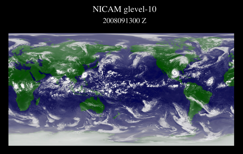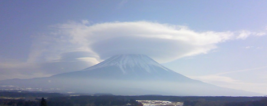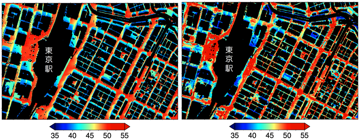Chief
 |
KUSAKA Hiroyuki, Professor
Prof. Kusaka graduated from the University of Tsukuba. He assumed his present position after a Researcher at the Central Research Institute of Electric Power Industry, long-term visiting scientist at NCAR, and as a Lecturer and Associate Professor at the Center for Computational Sciences, University of Tsukuba. |
About our group
In the Group of the Global Environmental Science, there are four faculties of Prof. Hiroyuki Kusaka, Prof. Hiroshi L. Tanaka, Asst. Prof. Mio Matsueda and Asst. Prof. Quang-Van Doan. There is one collaborative staff of Prof. Hiroyuki Ueda (Dept. of Life and Geoenvironmental Science) and two researchers of Dr. Akio Yamagami, Dr. Akifumi Nishi. We study global-, synoptic-, meso-, and micro-scale weather and climate, using a global-scale model NICAM, a regional-scale model WRF, and a micro-scale model CCS-LES. Advanced technology of the super computer is used to enhance the accuracy of the prediction.
Research topics
NICAM (Non-hydrostatic ICosahedral Atmospheric Model):
NICAM is the most promising cloud resolving general circulation model, originally developed by CCSR, the University of Tokyo and by FRCGC in JAMSTEC, and recently installed at Oakforest-PACS system in JCAHPC. Using NICAM, we start investigating tropical cyclones, extra-tropical cyclones, arctic cyclones, and predicting blocking anticyclones, stratospheric sudden warming, and the Arctic Oscillation in the global atmosphere.
 Fig.1 Numerical simulation of the general circulation of the atmosphere produced by 7-km resolution NICAM. NICAM-based modeling accurately predicted the evolution and movements of Typhoon Sinlaku and Hurricane Ike in 2008.
Fig.1 Numerical simulation of the general circulation of the atmosphere produced by 7-km resolution NICAM. NICAM-based modeling accurately predicted the evolution and movements of Typhoon Sinlaku and Hurricane Ike in 2008.
WRF (Weather Research and Forecasting), CM1 (Cloud Model 1), and CCS-LES (Large Eddy Simulation) models:
WRF, which is a compressible, non-hydrostatic numerical weather prediction model, is a collaborative development of the National Center for Atmospheric Research (NCAR), the National Centers for Environmental Protection (NCEP), etc. CM1, which is a compressible, non-hydrostatic numerical atmospheric model for idealized simulations, is developed in NCAR and PSU. Climate downscaling to the urban areas, heavy rainfalls in the urban areas, downslope windstorms, gap winds are studied with the WRF and CM1. Our group has been developing a new LES for urban areas (CCS-LES). Urban heat island is studied with the CCS-LES model.
 Fig.2 Cap and Tsurushi clouds around Mt Fuji.
Fig.2 Cap and Tsurushi clouds around Mt Fuji.
Fig.3 Road skin temperature distribution estimated by the CCS-LES model (left) and helicopter observation (right). Black indicates buildings.
Web sites
General Circulation Laboratory
(Update: Dec. 18, 2019)

